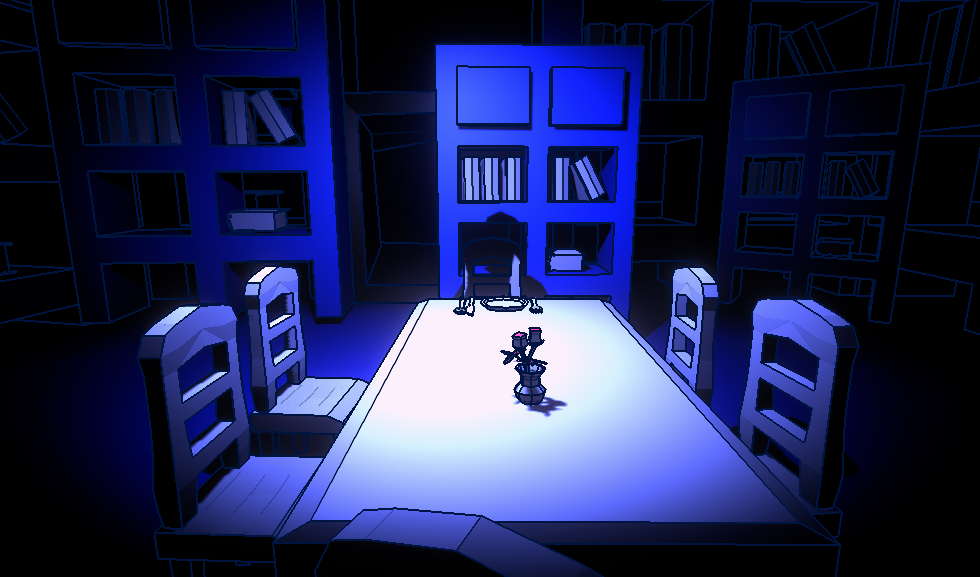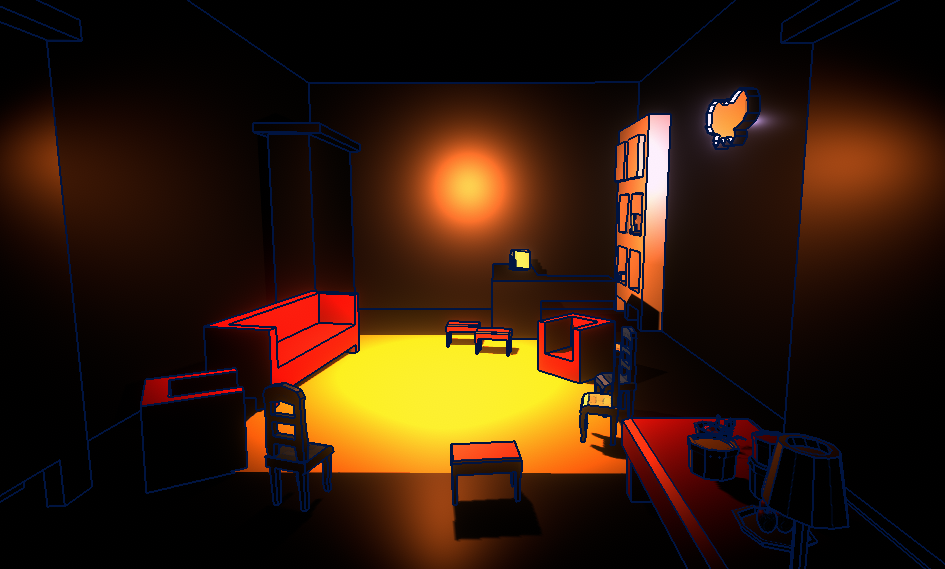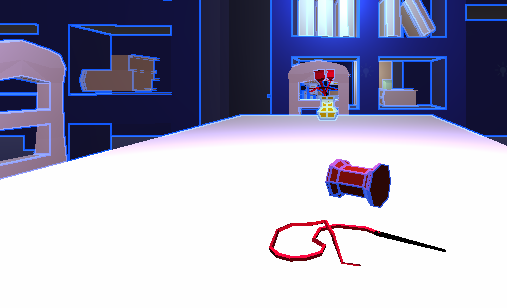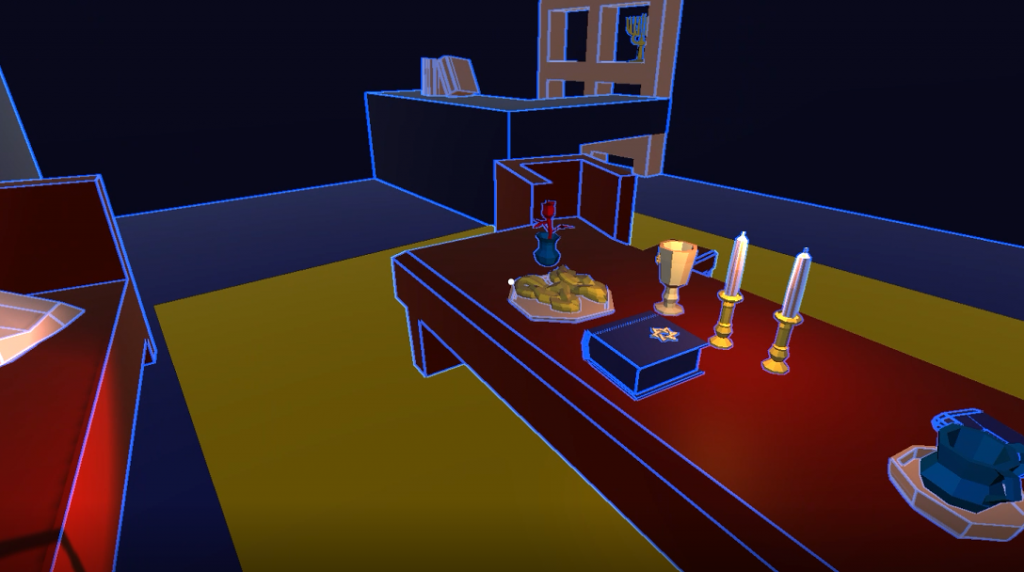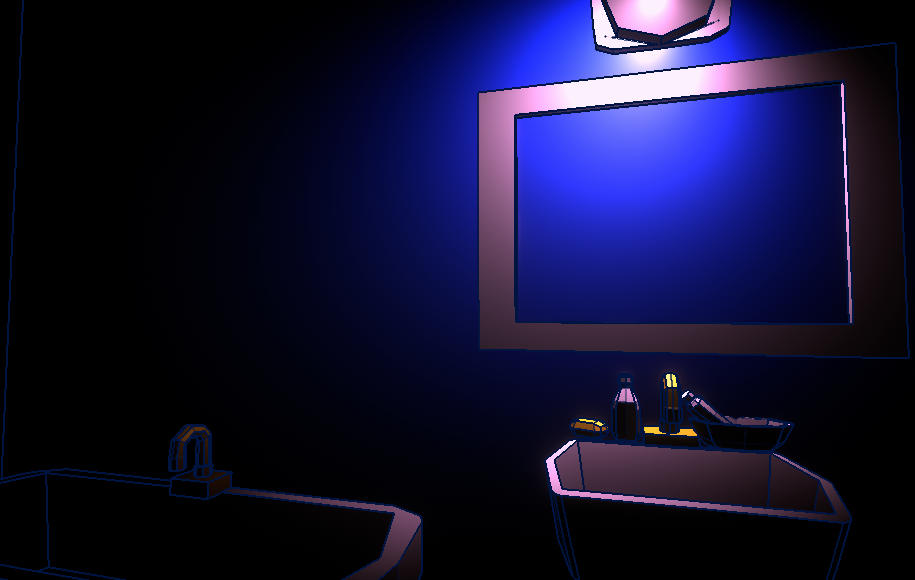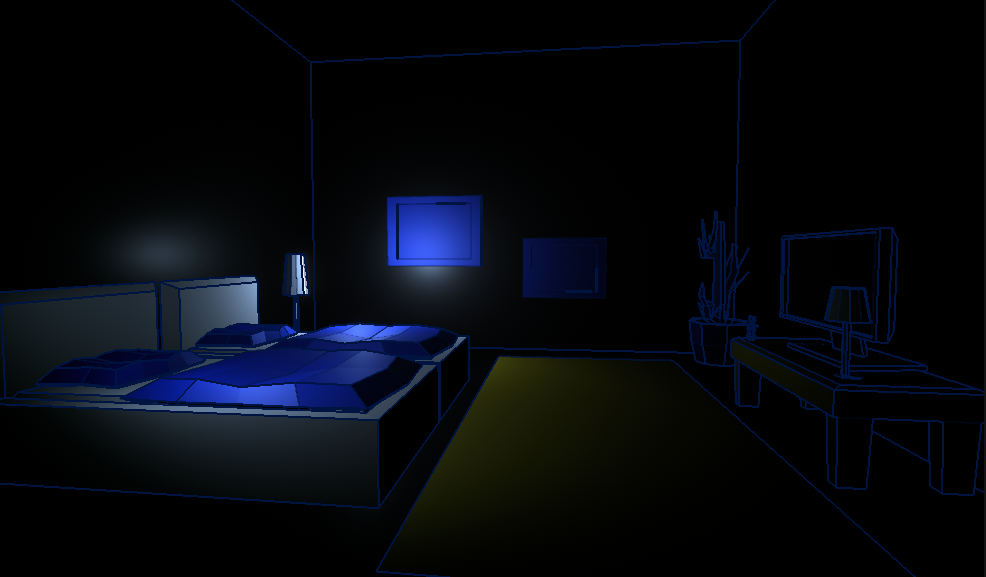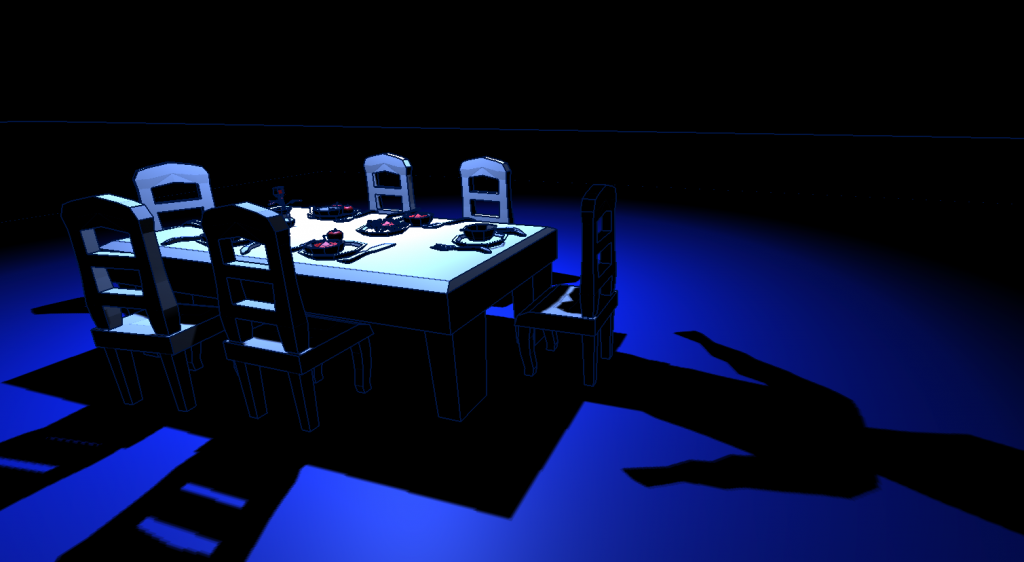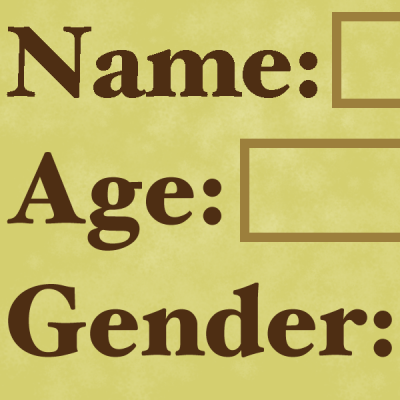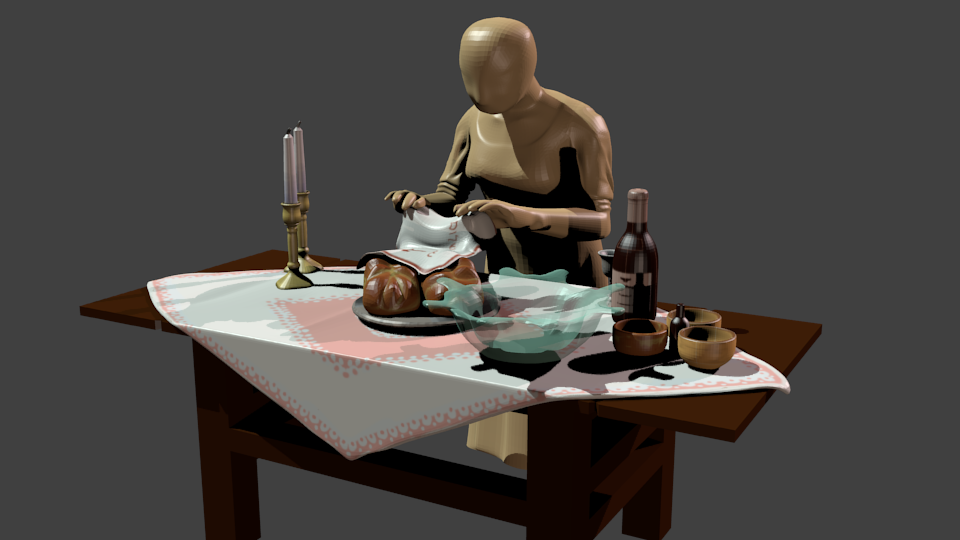A game about grief, told through music and a jewish house that becomes a labyrinth.
From my original game proposal, the project has come a long way.
What is the game?
It is a first person 3D atmospheric game that tells you a story entirely through the environment. You explore a labyrinth of a house, searching for something. Answers, comfort, an exit… the further you go, the more confusing the house becomes, rooms changing size, furniture, alignment and sound. The only constant is a shadow that appears to you repeatedly, singing.
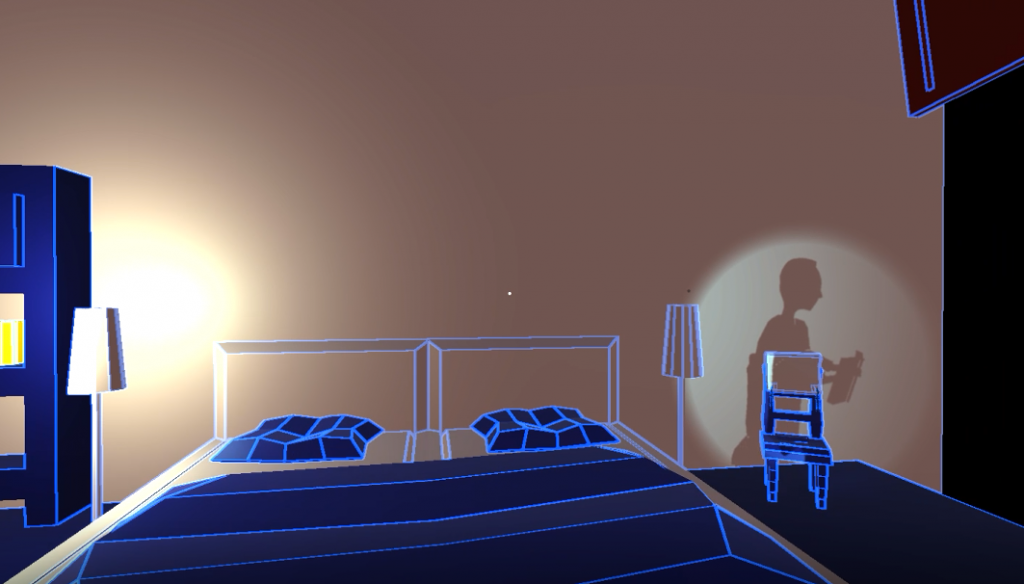
What is “sitting shiva”?
Sitting shiva is a jewish mourning tradition. It involves a seven day period after the funeral of a loved one where the grieving family shall not work and shall allow themselves to fully grieve. It is traditional for the community to rally around the grieving and provide for the family with food, comfort and presence.
After the seven days, mourning is not over. There are special prayers and duties that continue for 11 months and beyond that every year on the death day of the loved one. But the game focuses on the in-between of shiva.
Other traditions also appear in various moments thruout the game. Havdalah (the end of shabbat ceremony), Kiddush (greeting a holiday ceremony), Mesusot (containers on the door frames with blessings inside) and Keirah (the tradition of tearing ones clothes upon hearing of the death of a loved one).
The name “sitting” shiva comes from the fact that traditionally, mourners will sit on low stools instead of normal, comfortable chairs.
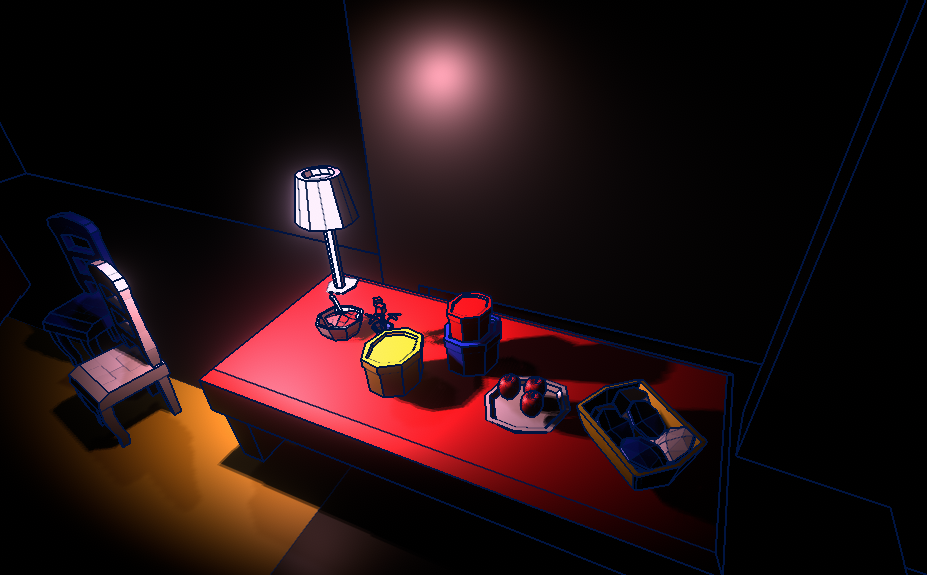
What’s that about music?
The game contains multiple instances of music. The shadow sings to you, the radio plays tunes and you, yourself speak prayers. At the climax of the game, you start first speaking together with others, hearing their responses, and then singing with the shadow.
All dialogue in the game, save the opening screen, are in Hebrew. They are traditional songs and prayers, some from the Torah itself. All prayer tunes are ones that I sing and hear at my local German synagogue.
To make this a little personal: I have been fortunate to receive vocal training and stage training from a young age. This is my first project where I decided to put that to good use. In my daily life, I am learning to cantillate and lead my community in prayer, which involves learning dozens of traditional melodies. This is where I got the inspiration for the singing shadow.
The songs have different narrative purposes. They tell of the passage of time, being bound to certain holidays. They tell of the relationship between you and the shadow, as they can be bound to family rituals. They also function as a representation of that shadow you see after a loss. The voice you thought you heard calling you that you know can no longer speak to you. The memories that grab you and overwhelm you.
Music touches a part of us that visuals cannot.
The game is purposefully engaging that part of us.
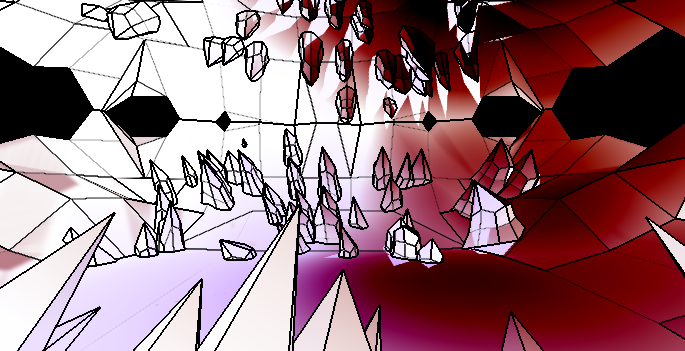
What about the visuals?
In grief, everything becomes overwhelming. At least in my experience, I find myself processing things on a very abstracted level. I understand the basics, I do not have space for the detail.
This simplification and surrealness is captured by all aspects of visual development. The outlines emphasising the extreme low poly aesthetic, the reduced color palette, the distorted room proportions and the repetitive hallways all lend themselves to this aesthetic message.
Tell me the plot
Okay, but spoilers ahead!
You enter a hallway. Behind you is a door, locked, but you hear the street noise beyond it. You step into a dark hallway and follow it to a room where the remnants of a ritual lay on a table. A multi wicked candle. A cup of wine. A little box.
You step through various hallways, some of which lead you back to where you came from, some lead to new rooms in a labyrinth. The layout of the house makes little sense to you. Passages disappear, rooms shift and you never know where you will next find yourself. On each doorway, a little box with a single letter is attached.
You are eerily alone, yet things keep changing. Food is set on the table without you touching it, chairs move around, rooms become more crowded or more spacious.
A shadow is in many of these rooms. in some he is hidden. In some he is striking.
In rooms with the shadow, you hear a man singing. You hear a woman speaking in others. Prayers and songs in a language you do not speak.
The labyrinth becomes more intense as you walk and time passes, more twisted and disorienting. Finally, you find yourself in a room where you are surrounded by shadows, the woman praying and the shadows responding to her prayer with “amen”.
Then you find yourself in a different version of this ominous room. The shadow is on the couch. Before him the items of another ritual: a prayer book, two candles, bread and wine. For the first time, the woman sings. A duet with the shadow man.
Finally you step through to a new version of the house. The long, twisting corridors are replaced with a simple hallway. The house looks and behaves normally.
You hear a woman’s voice, singing to herself. The shadow is gone and so is the man’s voice.
When you decide, you can step through the exit and leave the house, ending the game.

